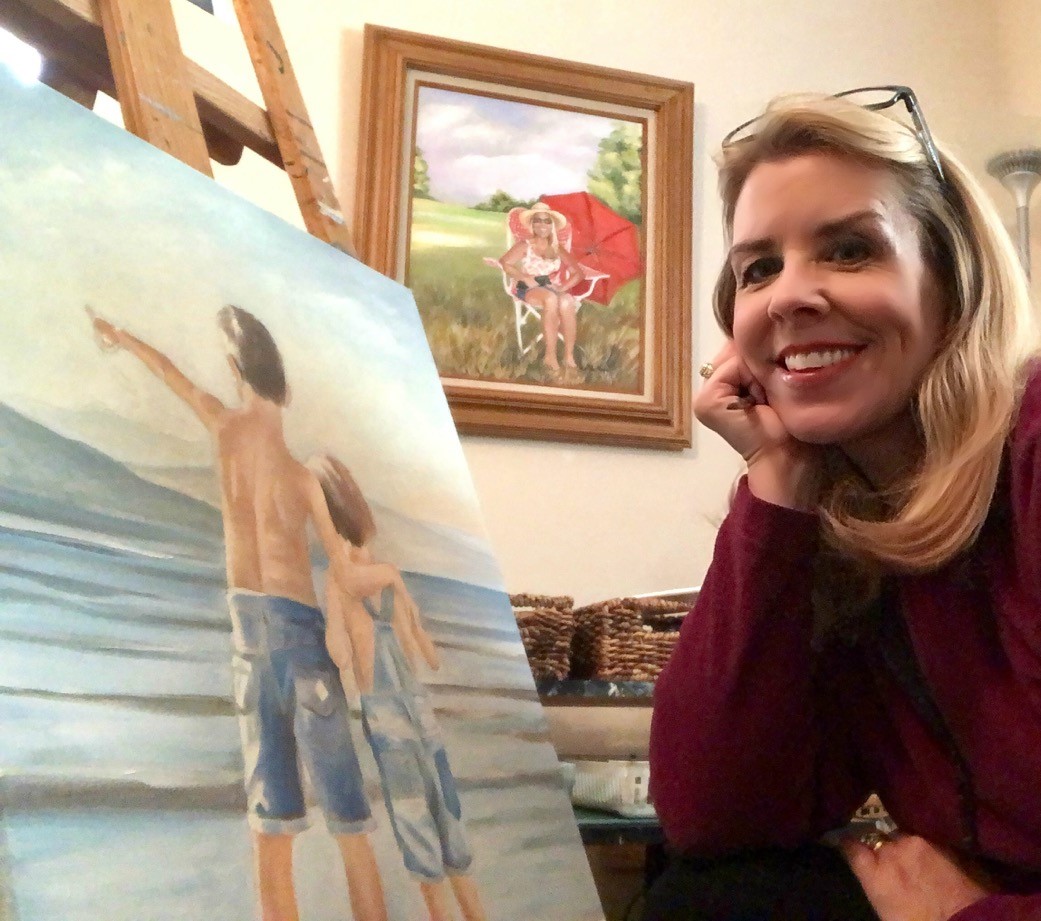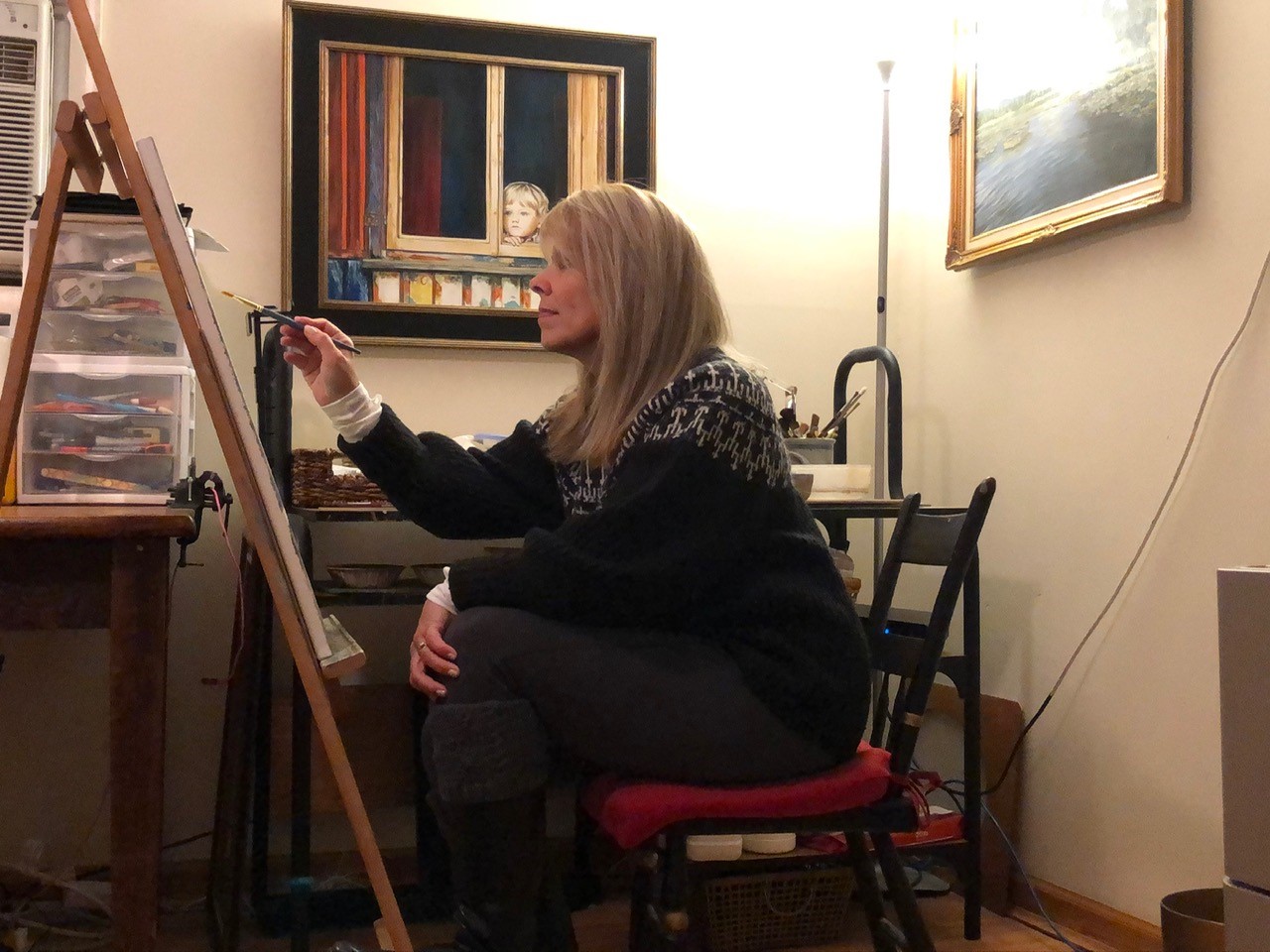Our award-winning calendar showcases West Virginia’s incredible wildlife diversity each year. If you’ve purchased one of our wildlife calendars, you’ve probably learned a few things about black bears, elk, brook trout and other wildlife species that live here in the Mountain State. Now, we want to take you behind the scenes so you can learn about the artists who help us create the calendar.
So, grab your copy of the 2021 West Virginia Wildlife Calendar and follow along. Don’t have one yet? You can buy one online or at participating retail locations.

Creating a career in art
Lee Ann Billups Blevins created the oil painting “Opossums,” the selection for May in the WVDNR wildlife calendar. The painting depicts a mother opossum with her baby clinging to her back. Whether a conscious choice or happy coincidence, the image selection seems particularly fitting for the month that honors Mother’s Day.
Art has always been second nature to Billups Blevins. She grew up in Kenova, Wayne County, near the woods and the rivers where the Ohio and the Big Sandy meet.
“As a child, I loved to draw,” she said. “My parents would buy art supplies for me. I’ve loved creating art my whole life.”
She attended art classes for children at the Huntington Museum of Art, studied art in high school and majored in art education at Marshall University.
Billups Blevins has continued creating, learning, and teaching art during her 31-year career as an art instructor in Cabell County.
Painting wild subjects
“I’ve painted on furniture, clothing, walls, and even shoes,” she said. “My favorite subjects are portraits of people and pets which I do in oils.”
Her portfolio shows a wide spectrum of subjects such as landscapes, seascapes, architecture, wildlife, and portraits of people and pets. Some subjects such as landscapes permit variations and impressions. Wildlife and human portraits generally carry more literal expectations.
“Wildlife is very challenging. A ’possum has to look like a ’possum,” said Billups Blevins. “Animals have textures, like fur or feathers, and those have to look realistic to be believable. When someone commissions a portrait, all the features must look like that person, and it takes a lot of time to get that just right.”
Working environment
Billups Blevins works on her art in a room in her rural home.
“It’s pretty orderly,” she said. “Everything has a place, or I can’t function. I listen to music and burn scented candles.”
Depending on her mood and the project, she may crank up 1980s pop, listen to Broadway show tunes, or go mellow with the gently floating notes of New Age music.
Her rural setting also provides easy access to wildlife models such as the opossums who visit her yard. She photographs her subjects for a reality-based starting point. She sketches directly onto the canvas, blocks in larger areas of color and lets the oil paint set. The small details and textures appear near the end. The whole process can take roughly 60 to 80 hours.
Billups Blevins wanted to paint the marsupials in part to counter their underserved bad reputations.
“These amazing creatures often get a bad rap. I wanted to help promote the good they do, like eating ticks, mice, and slugs” she said. “The opossum is such an unusual creature, with silvery fur and pink nose. They’re just cute!”
Billups Blevins entered her artwork for the WVDNR competition for the first time for the 2020 calendar and earned an honorable mention. The May mama ‘possum in the 2021 calendar is her first to be published in the WVDNR wildlife calendar.
For more information about Billups Blevins and her gallery of work, visit Lee Ann Billups Blevins Fine Art online.
Gifting the West Virginia Wildlife Calendar
Looking for something special to give to friends and families during the holiday season? The West Virginia Wildlife Calendar makes a great gift. Buy your calendars today while supplies last!




